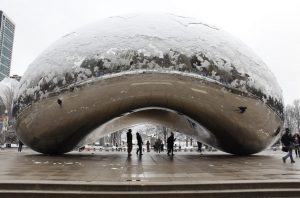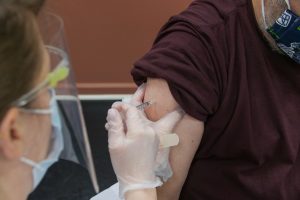There could be fewer beach closures this summer along Lake Michigan due to a new detection system being used by the Chicago Park District.
The previous way of testing didn’t give back results of E. coli levels for at least 18 hours after the water was sampled. If the results showed high contamination, city officials would then have to decide whether to close the beaches based on testing that was really done the previous day.
Thirty-six times last summer the Chicago Park District closed beaches along 26 miles of lakefront due to high counts of bacteria. It turns out that beaches would have only been off limits one time last summer if the new system were being used said Erma Tranter, president of Chicago’s Friends of the Parks organization.
[pullquote]“Officials basically had to close beaches and put out swim advisories that weren’t always necessary; sometimes they’d close the beaches just to be safe,” said Tranter.[/pullquote]
The new system, which uses computer software and models, will return test results in just two hours. The model predicts levels of bacteria using data it finds at locations of the source area of contamination rather than taking an actual sample of water to a lab, says the park district.
The new computer software and models the city starting using this year will monitor 16 of Chicago’s 24 beaches. The city of Chicago is seeking more grant money from the U.S. Environmental Protection Agency so the system can keep track of all of its beaches by summer 2014.
“This new way of testing the water for bacteria will hopefully allow officials to make a more educated and quicker decision when deciding whether or not to keep tourists and Chicagoans off the beaches,” said Tranter.
Another issue officials confront each year is sewage.

When there is a hard rainfall or storm, Chicago area sewers become overloaded. To release pressure and prevent or limit flooding, the Metropolitan Water Reclamation District of Chicago allows the excess water, which is raw, not disinfected sewage, to spill into the lake.
Tranter said the problem with this system is that the water being dumped into the lake is not disinfected. What is running off into Lake Michigan, where thousands of people swim, is raw sewage without any added bleach or chemicals.
“When this happens, the E. coli count in the water skyrockets, and it’s easy for people to get sick from just swimming in the water for a few minutes,” said Collin Taylor, the director of environmental education at the Friends of the Parks.
Taylor said so far in 2013, sewage dumping into the lake has happened once.
The MWRD Chicago Board of Commissioners recently voted to implement disinfection technology to make sure the amount of raw sewage spilling into Lake Michigan drops. This plan takes effect in 2014.
That makes beach goers like Megan Tuttle relieved.
The 19-year-old Indiana University student who is spending her summer in Chicago, said when she goes to the beach, which is often, three to four times a week, she never goes in the water because she thinks it’s dirty.
“I like to come to the beach to hang out with friends and lay out on the sand,” said Tuttle. “Occasionally, I’ll put my feet in the water, but that’s as far as I go. This new plan to clean up the water doesn’t change my mind though; I’m not going in the lake, I’m a biology major, I know what’s in there.”























Be First to Comment